Ferrari’s $200 million new e-factory in Maranello is as beautiful as its supercars
The striking architectural marvel is a feat of modern Italian design and a work of art in itself.
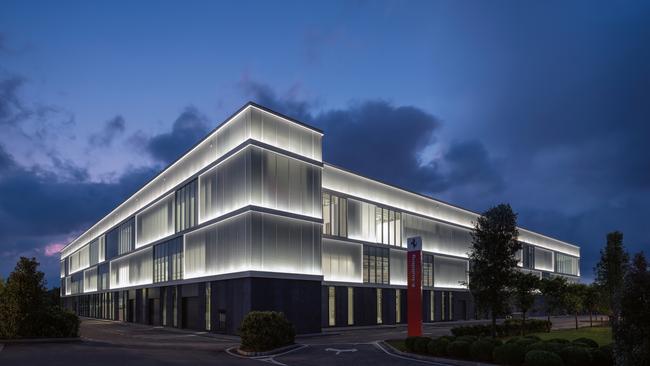
Car factories are not beautiful places. Ask someone to picture one and they will typically conjure an image of steel, sparks and scurrying humans, loomed over by robots. And it’s true, most production facilities are industrial and soulless – even the ones that make the really pretty cars.
Ferrari’s new, ultra-chic and sustainable “e-building” in Italy’s Maranello, however, is the polar opposite.
Take a stroll through the box-fresh, architecturally designed €200 million facility and it’s so clean, white and environmentally friendly that it feels more like an exhibition space or a museum than it does a manufacturing plant. Which was exactly the goal, of course.
“It’s very sophisticated and is quite beautiful,” says Mario Cucinella, the renowned Italian architect who designed the facility for Ferrari. “It’s nothing like you imagine a factory; a place with car oil and dirt. It’s super clean. It’s like a doctor’s place.”
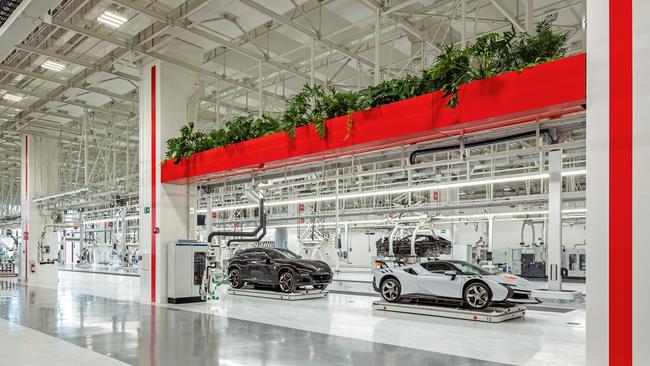
The very clean, very smart e-building was inaugurated on June 21, 2024. It isn’t only huge and breathtakingly beautiful – it spans 42,500 square metres over four floors and even has internal gardens, or “green spaces” in which workers can relax – but it marks the beginning of a new chapter for Ferrari.
Like most carmakers, Ferrari is wading bravely into the electric era, and this new facility provides the flexibility to create cars with all sorts of engines: petrol, hybrid and – for the first time in Maranello history – pure electric. Incidentally, the “e” in e-building doesn’t stand for electric. Instead, it means three things: energy, because it will build all kinds of powertrains; evolution, because of its production flexibility; and environment, for its clear focus on sustainability.
But while the cars it will produce are undoubtedly fascinating – Ferrari’s first EV will be unveiled in late 2025, and enter production in 2026 – the building itself is just as intriguing.
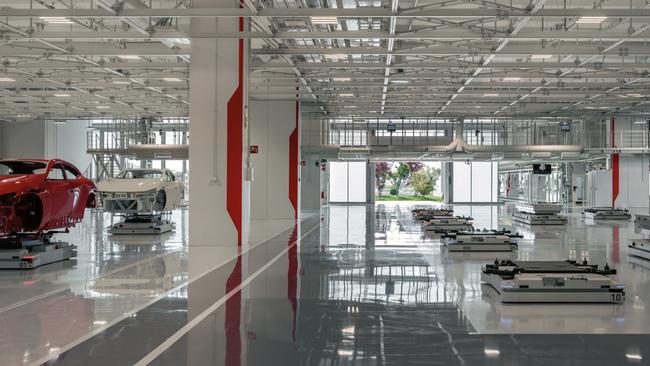
Not only is it immaculate in appearance, but the factory sets new benchmarks for sustainability. Which is why Ferrari turned to Cucinella, heavyweight in the world of architecture, to design it.
Cucinella is known for breathtaking, award-winning designs and, perhaps more crucially, for his pioneering approach to reducing buildings’ carbon footprint.
Ferrari – a brand synonymous with burning vast amounts of fuel in its V12-engined monsters – has committed to being carbon neutral by the end of the decade, and the e-building isn’t only the brand’s most efficient factory yet, it was designed to be certified as a Nearly Zero Energy Building (NZEB).
“The efficiency of the building and its integration with renewable energy brings the message that we’re now starting a new era,” Cucinella explains.
More than 3000 solar panels, capable of producing 1.3 megawatts of power, adorn the roof (9000 panels have been installed at Maranello as a whole), and none of the building’s energy systems rely on fossil fuels. The air conditioning, for example, uses an electric heat pump powered by renewables, while a gigantic 200-cubic-metre underwater tank stores rainwater from the roof to help irrigate the many green areas distributed around the plant. Even creating the building materials produced less CO2 than normal, thanks to new manufacturing processes.

Then there’s the focus on light, which Cucinella says brings a raft of benefits. Much of the exterior is made of frosted or transparent glass, and there are specially designed light wells to flood the interior with diffused sunlight. The white colourscape of the interior and finish of its floors were also carefully chosen to reflect light, which aids visibility and heating, as well as playing an huge role in improving worker wellbeing.
“Daylight changes in intensity and it has a psychological connection with people,” Cucinella explains. “It’s very important, this kind of variation. It’s not fixed light, which is basically terrible, but this connection with the lighting, with the light moving and being more intense, less intense, that was the goal.”
The glass exterior also gives the e-building a distinctive, almost beacon-like appearance at night. “It is quite beautiful because it’s different in the day and night,” enthuses Cucinella. “In the day it’s a white box and at night it is like a lantern.”
The new factory was first mooted in 2019 and took just two years to design and build. It sits on reclaimed land previously occupied by derelict buildings and, in a further nod to sustainability, the site will also include 1.5 kilometres of bike lanes.
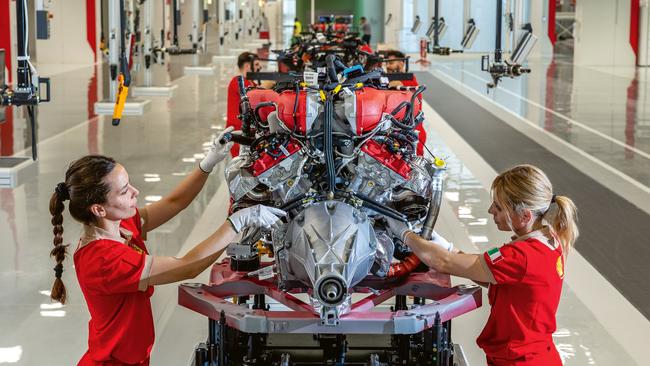
Ferrari has even overhauled its logistics to confine heavy trucks to an area surrounding the plant, reducing intrusion on nearby pedestrian routes.
Of course, being a factory means the e-building has to be functional as well as beautiful. Three hundred people will work inside once it is operating at full capacity and Ferrari stresses its key benefit won’t be to boost overall production numbers, which sit at about 13,500 cars per year, but to give it greater flexibility.
It will also free up production space in Ferrari’s existing buildings for special low-volume models, and allow the brand to double down on how customers can personalise their cars, which is a lucrative part of Ferrari’s business.
Actually building the cars will be faster in the e-building, too. The floor is rail-free, which reduces trip hazards and allows cars to move through the factory more swiftly on autonomous trolleys dubbed AGVs (automated guided vehicles). These trolleys are height-adjustable and can even sink into the floor to ensure workers don’t have to strain and reach when fitting new parts.
It’s not a stretch to call the e-building a “smart factory”, either. The entire building has been embedded with ultra-wideband hardware to allow for high-tech 3D positioning of parts and the integration of AI systems.
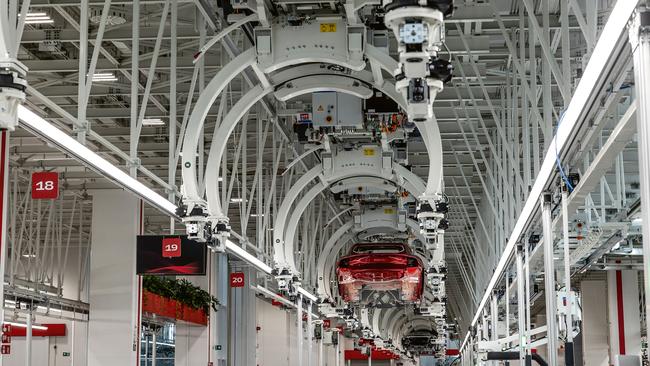
But while some automation is used – Ferrari does have robots in its factories, including two in the engine plant that are, in properly Italian fashion, dubbed Romeo and Juliet – the brand stresses its cars remain predominantly handmade. “It’s smart, but not automated,” as one Ferrari worker told us.
About 30 per cent of the space inside the e-building is currently unused but will soon be swallowed up by EV production, which Ferrari is creating almost entirely in-house. That means the e-axles, the electric motors and even high-voltage batteries will be designed and assembled here.
For all of its functional advances, it’s obvious that creating a beautiful building was a key goal for Cucinella. He describes the façade as looking like a musical pentagram that uses its sections of frosted or clear glass to change its visual rhythm.
The psychological benefits of this beauty, says Cucinella, aren’t only felt by the factory workers, but ripple out into the broader community. Beautiful buildings are, of course, something of an Italian tradition.
“You spend eight hours in the building and it becomes part of your daily life,” the architect says. “The beauty of your surroundings contributes to your health, your humour, to the pleasure of your work. This is why even a hospital needs to be beautiful, because beauty is part of the cure.”
He’s not underselling it, either. Ferrari is a source of immense pride in Italy and astonishingly, a recent family open day saw 30,000 locals arrive to inspect the building.
“Yes, 30,000 people! I was shocked,” laughs Cucinella. “It’s a nice connection between a super car and a family’s life. It’s an attachment to their territory.
“Aesthetically it [the factory] is very nice but the most emotional part when we open a building is when people get in it, and they’re surprised and happy. This is the most important thing. This is why I’m an architect.”

This story is from the September issue of WISH.




To join the conversation, please log in. Don't have an account? Register
Join the conversation, you are commenting as Logout